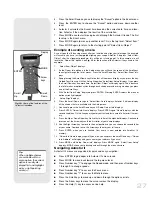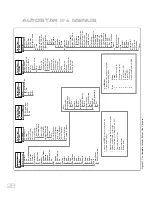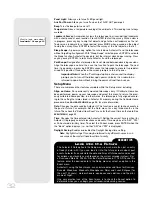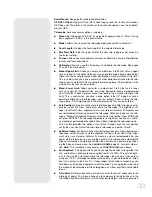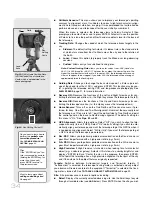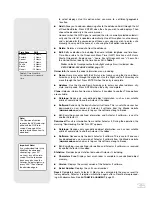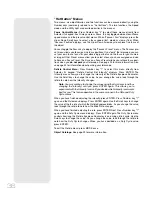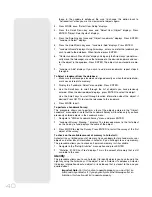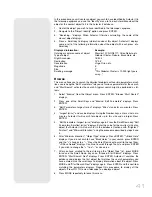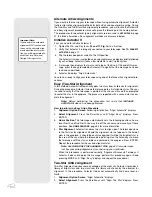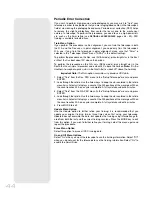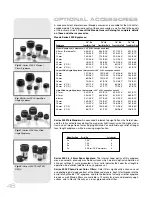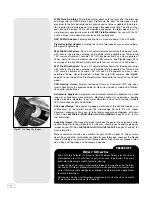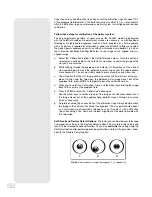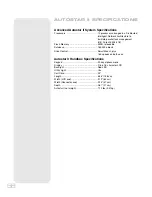
In this procedure, you will center an object you wish to have identified by Autostar II in
the telescope eyepiece and use the "Identify" menu to find out information about the
object or the nearest object to it in the Autostar II database.
1.
Center the object you wish to have identified in the telescope's eyepiece.
2.
Navigate to the "Object: Identify" option and press ENTER.
3.
"Searching..." displays. When Autostar II finishes calculating, the name of the
closest object displays.
4.
Press a Scroll key to display information about this object. Autostar II displays
some or all of the following information about the object with each press of a
Scroll key:
Displayed information:
Example:
Catalog or common name of object
Messier 107, NGC6171, Orion Nebula, etc
Type of object
Globular Cluster, Nebula, Black Hole, etc.
Right Ascension
16:32:4
Declination
13°03'
Constellation
Virgo, Orion, etc.
Magnitude
3
Size
2'
Scrolling message
"This Globular Cluster is 10,000 light years
away...."
Browse
This menu allows you to search the libraries for objects with certain parameters, much
like a search engine. "Edit Parameters" lets you set various parameters for the search,
and "Start Search" activates the search. A typical search might be performed as fol-
lows:
1.
Select "Browse" from the Object menu. Press ENTER. "Browse: Start Search"
displays.
2.
Press one of the Scroll Keys and "Browse: Edit Parameters" displays. Press
ENTER.
3.
"Edit Parameters: Largest (mins)" displays. "Mins" stands for arc-minutes. Press
ENTER.
4.
"Largest (mins)" and a value displays. Using the Number keys, enter a size in arc-
minutes. Autostar II will search for objects
up to
this size and no larger. Press
ENTER.
5.
"Edit Parameters: Largest (mins)" displays again. Press the Scroll Down key. "Edit
Parameters: Smallest (mins)" displays. Enter the value for the smallest size of an
object that Autostar II will search for in the database. Continue with "Brightest,"
Faintest," and "Minimum Elevation," using the procedure described in steps 3 and
4.
6.
After "Minimum Elevation," "Object Type" displays. Press ENTER." "+Black Hole"
displays. If you do
not
wish to have "Black Holes" in your search, press ENTER
and the "+" changes to a "–." Press the Scroll Down key to scroll to the next item.
"+Diffuse Nebula" displays. Continue to scroll through the list and press ENTER
if you wish to change the "+" to a "–" or vice-versa.
7.
After you have scrolled to the last item on the "Object Type" list, press MODE
twice and the Scroll Down key once. "Browse: Start Search" displays. Press
ENTER. "Start Search: Next" displays. Press ENTER. Autostar II searches the
database and displays the first object that matches the search parameters you
have entered. Use the scroll keys to display information about the object. Press
MODE and "Start Search: Next" displays again. Press ENTER and the next item
matching the parameters displays. Repeat this procedure to display all the
objects. Press GO TO to slew telescope to a displayed object.
8.
Press MODE repeatedly to leave this menu.
41
Summary of Contents for RCX400
Page 73: ......

